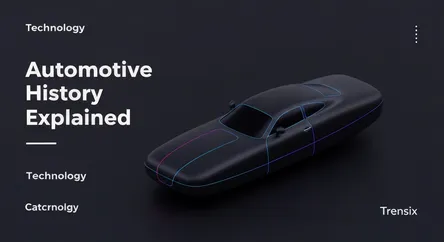Technology
Automotive History Explained

Explore the history of the automobile, from the first steam-powered vehicles to modern electric cars. Discover key milestones and inventors.
What is it?
Automotive history is the study of the origin and development of self-powered vehicles. It covers everything from early experiments with steam engines to Karl Benz's first gasoline-powered car patent in 1886, the birth of the modern auto. This field tracks the evolution of vehicle design, manufacturing processes like Henry Ford's assembly line, and the rise of iconic brands. It encompasses technological breakthroughs, shifts in consumer preferences, and the immense cultural impact cars have had on society, transforming travel, commerce, and urban design across the globe.
Why is it trending?
Interest in automotive history is surging due to the current industry shift towards electric vehicles (EVs) and autonomous driving. This transition sparks nostalgia for the 'golden age' of combustion engines. Classic car shows, auctions, and restoration reality TV series have also gained immense popularity, turning vintage automobiles into celebrated cultural artifacts and valuable investments. Furthermore, online communities and digital archives make it easier than ever for enthusiasts to research and share the heritage of specific models, fueling a global passion for automotive history.
How does it affect people?
Automotive history profoundly shapes personal and collective identity. For many, cars represent freedom, key life milestones, or cherished family memories. Understanding this history provides context for our modern world, explaining urban sprawl, suburban development, and our economic reliance on manufacturing. It inspires future innovation by highlighting how past engineering challenges were overcome. For collectors and hobbyists, it offers a tangible connection to the past, fostering communities built around a shared passion for the engineering and artistry of classic automobiles.